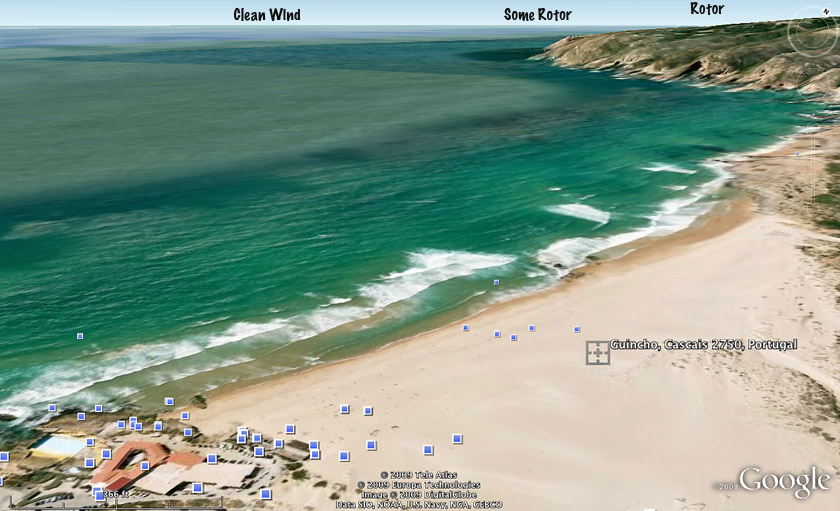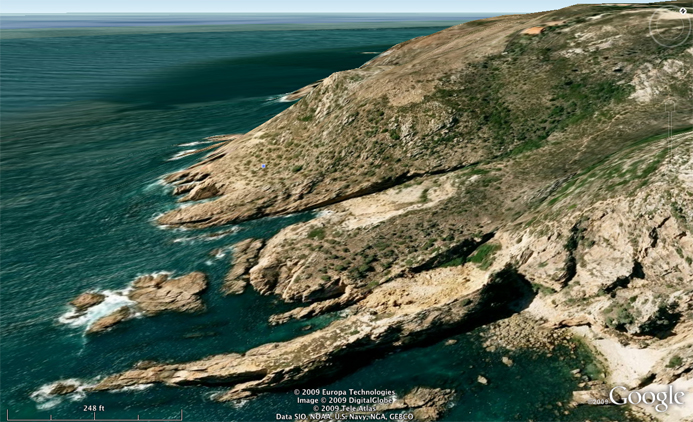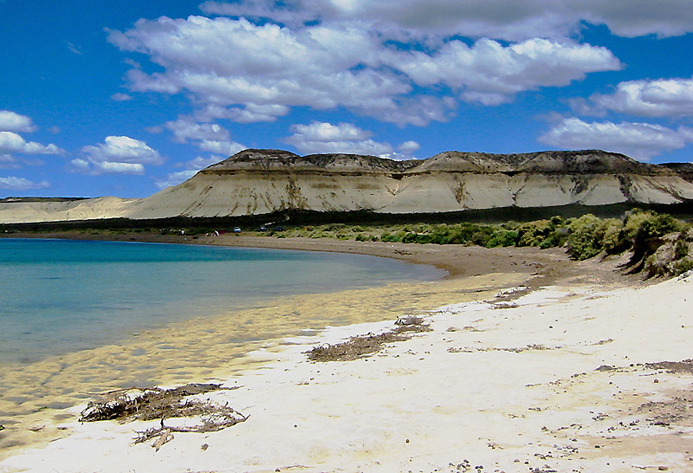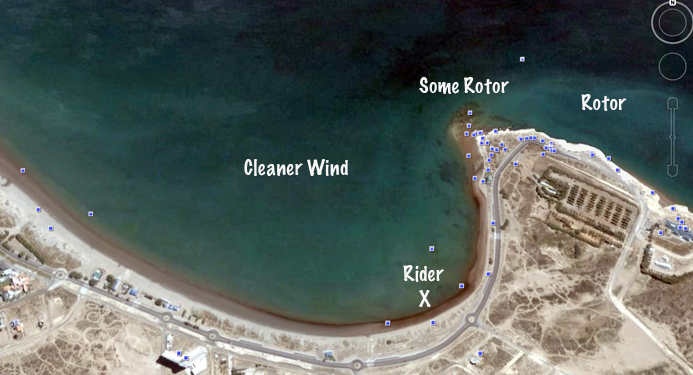
 |
|
|
|
#1
|
||||
|
||||
|
Quote:
That is the beach at Guincho, it is less than 2.5 miles (about 4 km) from that point of land, Cabo de Rocha. Cabo seems to rise a good distance above the water. The area is known for a strong wind, the Nortada. I understand it comes out of the N-NW augmented by thermals from the arid hot shore areas rising to around 25 kts. (perhaps as high as 40 kts.?, not sure about this).  The photo is alinged more or less to the NW. If you have a honking strong, likely already gusty wind rotoring and refracting around this high point of land, you can expect some major gusts and lulls. I understand it is a popular spot with windsurfers. They can perhaps deal a bit easier with rotor, gliding through the lulls and sheeting out (or being catapulted!) in the gusts. Kiters either manage or they don't. Sounds like an experts spot with strong local experience when the wind is on and from the N-NW, then add waves! I imagine with strong winds, the "some rotor" zone can be pretty wide with shifting winds.  A closer look at Cabo de Rocha, that is a big chunk of rock! The thing with rotor like rapids over rocks, the faster the flow and higher the obstructions, the more violent and longer the area of turbulence. Some kiters may not know it but they are setting up in some Class 4 (aerial) rapids by analogy. We frequently say this accident or fatality happened due to excessively gusty wind. In some of these cases the excessively gusty wind has been caused or increased by rotor. Riders should routinely scope this out when evaluating the launch of the day. Who else has rotor at their spot, when, why and how do they deal with it? Any interesting stories come to mind?
__________________
FKA, Inc. transcribed by: Rick Iossi |
|
#2
|
||||
|
||||
|
Here's another example of serious rotor from a couple of years back. Again, this is known as a windsurfing spot, kiters go elsewhere. Windsurfers may be able to manage excessive rotor a bit better. At least they may be able to glide through the lulls. In gusts hopefully suffer nothing worse than to get spun 20 ft. away from their rig across the water in a catapult.
 In strong winds, this embayment seems like it would turn into a blender of cascading wind. If you are standing there, the wind would die down to almost nothing for seconds, then boost up a bit, then perhaps rage down at high speed, then ebb or die and repeat. The direction of the wind might change as well, perhaps a lot. Look at the colored blobby diagram on the first page. I assume the colors represent various velocity ranges. Thing is where there is no color, there is no significant wind, dead lull shifting perhaps to honking strong in a red zone. The mess whirls all over the place continuously.  Pretty much anything east of north going clockwise up to around north west will be rotored in this bay. The rider was from out of the area, and apparently didn't fully appreciate hazardous conditions at this spot. Reportedly he was warned that this area wasn't a good choice for kiting by a local. He had been in around 12 kts. winds, kited upwind nearer to the rocks of the point. He was reportedly hit by a strong gust and lofted about 45 ft. high and fell into about 8 inches of water. He didn't survive the impact. Location is real important. Kiters should learn what to look for and avoid particularly if they are new to an area. Question, do some instructors teach this stuff along with other location selection considerations? I hope the days of focusing on the kiting setup, waterstarting and other basics alone are well in the past.
__________________
FKA, Inc. transcribed by: Rick Iossi |
|
#3
|
||||
|
||||
|
We had some north winds in SE Florida yesterday. Sometimes they will be bent side shore close to the beach or at times like yesterday, they will stay side offshore. This article goes into why offshore winds suck for kiting and usually aren't worth bothering with in nearshore areas. At best they can be a pain and at worse they can take you out. http://fksa.org/showthread.php?p=38932#post38932
__________________
FKA, Inc. transcribed by: Rick Iossi |
 |
|
|